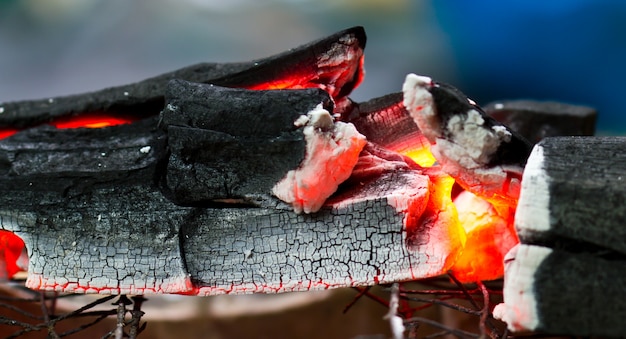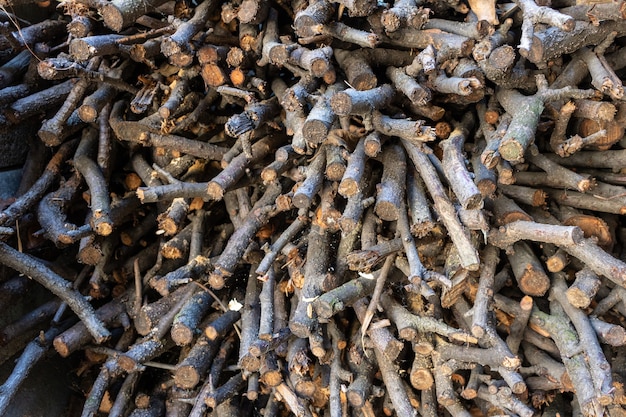Is it safe to burn Mould off a BBQ?
The Dangers of Mold on BBQs
Mold is a common problem that can develop on many surfaces, including BBQ grills. It typically thrives in warm and moist environments, making BBQs an ideal breeding ground. However, when it comes to removing mold from a BBQ, there are important safety considerations to keep in mind.
The Risks of Burning Mold
While burning mold may seem like a quick and easy solution, it can pose significant health risks. When mold is burned, it releases microscopic spores into the air, which can be harmful when inhaled. These spores can cause respiratory issues, allergic reactions, and even infections in individuals with compromised immune systems.
“Burning mold releases harmful spores into the air, posing health risks.”
An Alternative Approach: Cleaning and Prevention
Instead of resorting to burning mold off your BBQ, it is best to take a more cautious approach that focuses on cleaning and prevention. Here are some steps you can take:
- Clean Regularly: Regularly clean your BBQ grates, surfaces, and all other parts to prevent mold growth. Use a mixture of warm water and mild dish soap, followed by a thorough rinse.
- Remove Visible Mold: If you notice any mold on your BBQ, it is important to remove it properly. Put on gloves and use a scrub brush or sponge to physically remove the mold. Dispose of the moldy materials in a sealed bag to prevent further spread.
- Dry Thoroughly: After cleaning, ensure that your BBQ is completely dry before using it again. Moisture is a catalyst for mold growth, so proper drying is crucial.
- Store in a Dry Place: When not in use, store your BBQ in a dry and well-ventilated area to minimize the chances of mold growth.
When to Seek Professional Help
In some cases, mold on a BBQ may be severe or difficult to remove. If you are unable to successfully clean your BBQ or suspect that the mold has spread beyond the surface, it may be best to seek professional help. Mold remediation specialists have the necessary expertise and equipment to safely and effectively address the issue.
What is the healthiest BBQ fuel?
As summer approaches, many people in the UK look forward to firing up their barbecues and enjoying delicious grilled foods in the great outdoors. However, when it comes to choosing the right BBQ fuel, there are some options that are healthier than others. In this article, we will explore the different types of BBQ fuels and determine which one is the healthiest choice for your summer grilling.
Charcoal:
Charcoal is a popular choice for BBQ enthusiasts due to its ability to impart a smoky flavor to grilled foods. However, traditional charcoal can release harmful chemicals and particles into the air, which can be harmful if inhaled. To minimize health risks, it is advisable to opt for natural lump charcoal or charcoal briquettes made from recycled materials.
Propane Gas:
Propane gas is a convenient and clean-burning fuel option for barbecues. It produces fewer harmful emissions compared to charcoal and can provide consistent heat for grilling. Using propane gas also eliminates the need for lighter fluid, reducing the risk of accidental flare-ups and chemical contamination in your food.
Electricity:
For those who prioritize convenience and ease of use, electric grills are a popular choice. They produce no harmful emissions and can be used indoors or in areas where open flames or gas grills are not allowed. While they may not provide the same authentic smoky flavor as charcoal or gas grills, electric grills offer a healthier option for those concerned about air quality and pollution.
No matter which BBQ fuel you choose, it’s important to follow proper grilling techniques and safety precautions to ensure a healthy and enjoyable summer barbecue experience. Remember to clean your grill regularly, cook food to appropriate temperatures, and avoid charring or burning your food, as these can potentially lead to the formation of harmful compounds.
Remember, a healthy BBQ is not just about the fuel you use. It’s also about selecting high-quality ingredients, incorporating plenty of fruits and vegetables into your grilled dishes, and practicing portion control.
In summary, while each BBQ fuel has its pros and cons, propane gas is generally considered the healthiest option due to its clean-burning properties and minimal emission of harmful substances. However, if you prefer the traditional smoky flavor, opt for natural lump charcoal or charcoal briquettes made from recycled materials. Electric grills are a suitable alternative for those prioritizing convenience and indoor use. Whichever fuel you choose, don’t forget to prioritize grilling safety and make healthy choices when it comes to your food selection.
Is Burning Wood Worse Than Gas?
When it comes to heating our homes, there are various options available. One debate that often arises is whether burning wood is worse for the environment than using gas. Let’s take a closer look at the environmental impact of these two popular fuel sources.
Burning Wood
Wood has long been used as a source of heat, especially in traditional fireplaces and wood-burning stoves. While burning wood releases carbon dioxide (CO2) into the atmosphere, it is considered a more sustainable option compared to fossil fuels like gas. This is because trees absorb CO2 during their growth, which helps to offset the emissions when they are burned for fuel.
However, the type of wood and how it is sourced can make a difference in its environmental impact. Sustainable forestry practices, such as replanting trees, can help maintain a healthy balance. It is also important to use dry and seasoned wood to minimize smoke and pollutants released during combustion.
Using Gas
Gas, on the other hand, is a cleaner-burning fuel compared to wood. Natural gas produces lower levels of air pollutants and greenhouse gases when burned. It is also more convenient to use as it doesn’t require chopping firewood or dealing with ashes.
Yet, the extraction and transportation of gas can have negative environmental consequences. Leakage of methane, a potent greenhouse gas, during extraction and distribution processes is a concerning issue. Methane has a higher global warming potential compared to CO2, making it important to address these leaks to reduce overall environmental impact.
The Verdict
Ultimately, the environmental impact of burning wood versus using gas depends on several factors, including sourcing methods, efficiency of appliances, and emissions control measures.
In terms of sustainability, using locally sourced and sustainably harvested wood can make it a viable option. Additionally, using modern, efficient wood-burning stoves or biomass boilers can help minimize emissions and improve overall efficiency.
However, gas is generally considered a cleaner-burning fuel with fewer immediate environmental concerns. Advancements in technology and stricter regulations are continuously improving the efficiency and reducing the impact of gas-fired heating systems.
As with any energy source, it’s important to consider the overall carbon footprint and choose the most sustainable option available. Assessing the specific circumstances and weighing the pros and cons of each fuel source will help individuals make informed decisions about their heating choices.
Can burning rotten wood make you sick?
Woodburning is a popular method of heating homes in the UK, but it is important to be aware of the potential risks associated with burning rotten wood. While burning well-seasoned hardwood is generally considered safe, burning rotten wood can release harmful substances that can be detrimental to your health.
Why is burning rotten wood harmful?
Rotten wood contains higher levels of moisture, which can lead to incomplete combustion and the release of harmful pollutants such as carbon monoxide, volatile organic compounds (VOCs), and particulate matter (PM). These pollutants can cause respiratory problems and aggravate existing conditions such as asthma and allergies.
Carbon monoxide is a colorless and odorless gas that can be deadly when inhaled in high concentrations. It binds to hemoglobin in the blood, reducing its ability to carry oxygen throughout the body.
Volatile organic compounds (VOCs) are chemicals that can be released during incomplete combustion. They can irritate the eyes, nose, and throat, and long-term exposure to certain VOCs has been linked to an increased risk of cancer and other health issues.
Particulate matter (PM) consists of tiny particles suspended in the air, including ash and soot. Breathing in these particles can cause respiratory problems, especially for those with pre-existing lung conditions.
How to burn wood safely
To avoid the health risks associated with burning rotten wood, follow these tips:
- Use only well-seasoned hardwood for burning.
- Avoid burning wood that appears rotten, moldy, or damp.
- Regularly clean and maintain your woodburning stove or fireplace to ensure efficient combustion.
- Install a carbon monoxide detector in your home to alert you of any dangerous levels of gas.
- Ensure proper ventilation when using your woodburning appliance to minimize indoor air pollution.
Remember, the quality of the wood you burn plays a significant role in the safety and efficiency of your woodburning appliance. Always choose dry and well-seasoned wood for a healthier and more enjoyable woodburning experience.
If you have concerns about the wood you are burning or need assistance with maintaining your woodburning appliance, it is recommended to consult a professional chimney sweep or heating technician who can provide expert advice and guidance.



